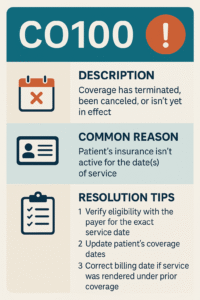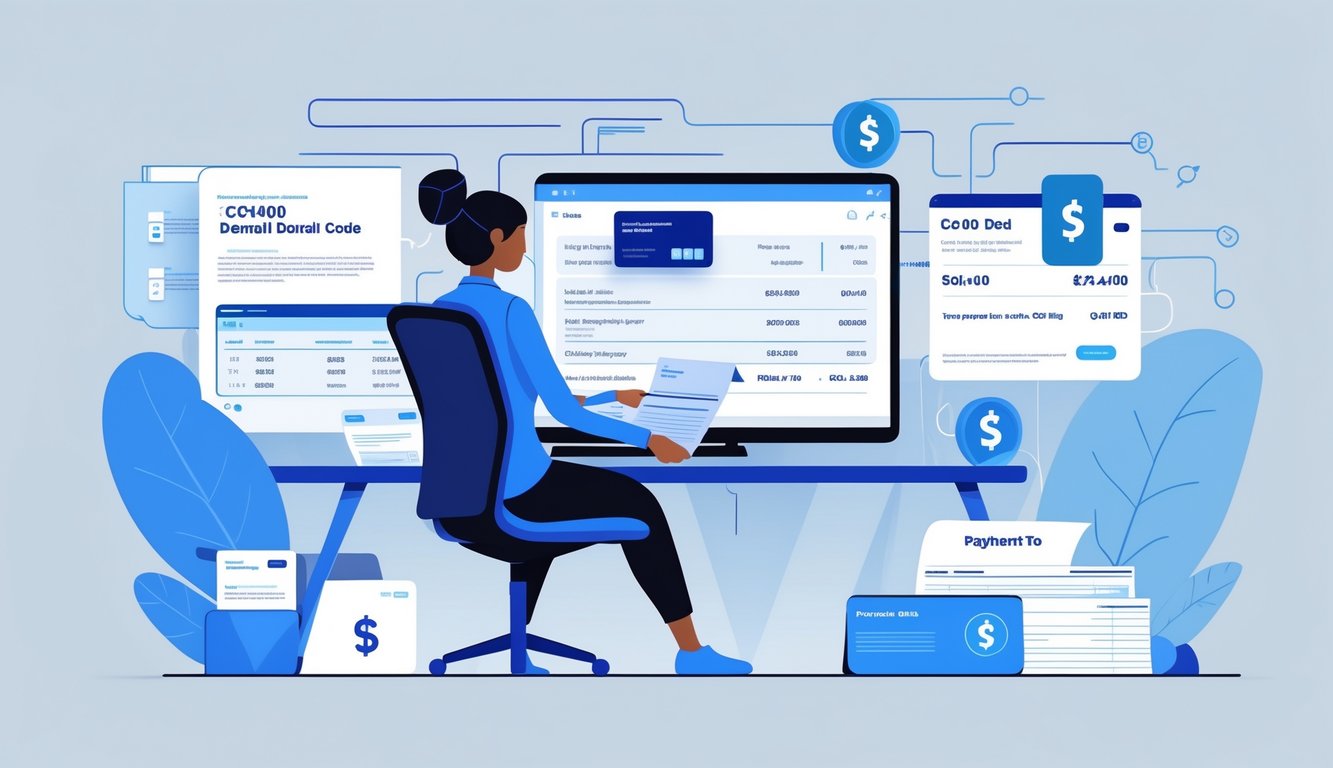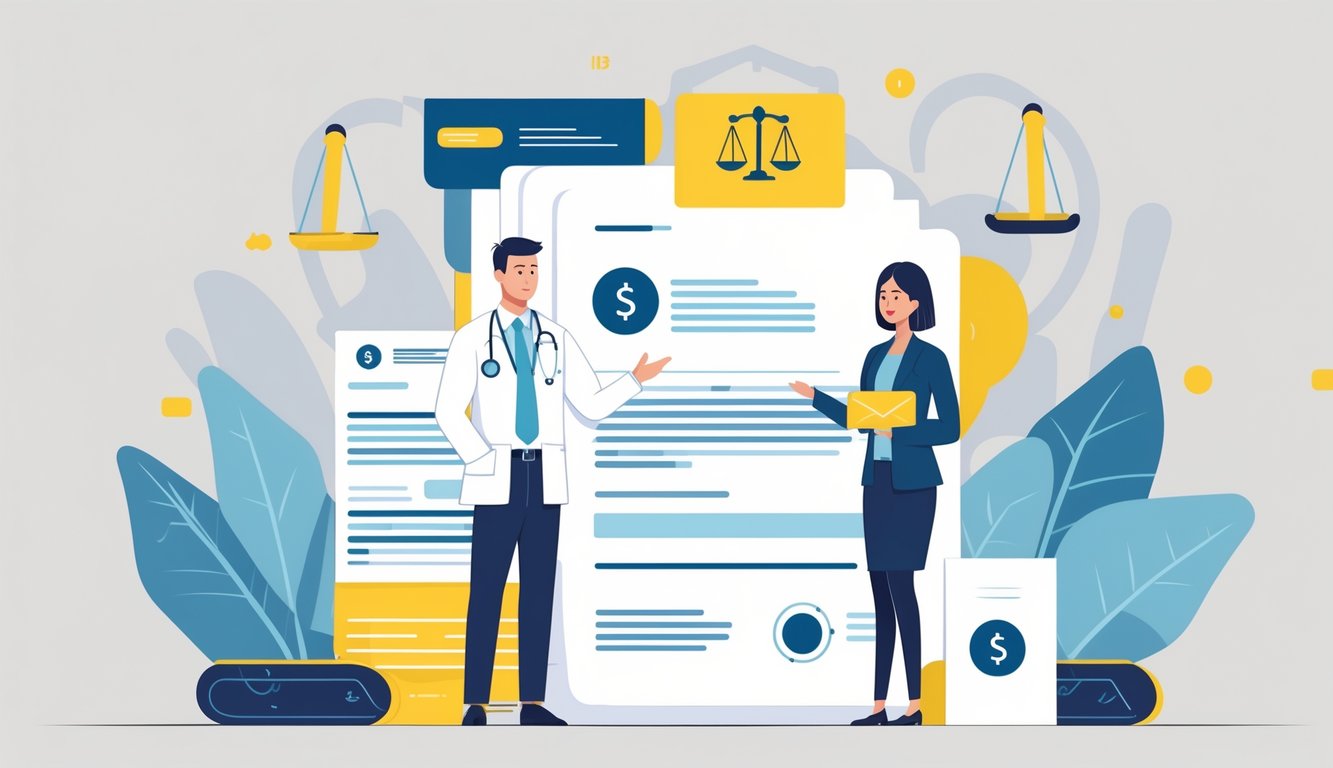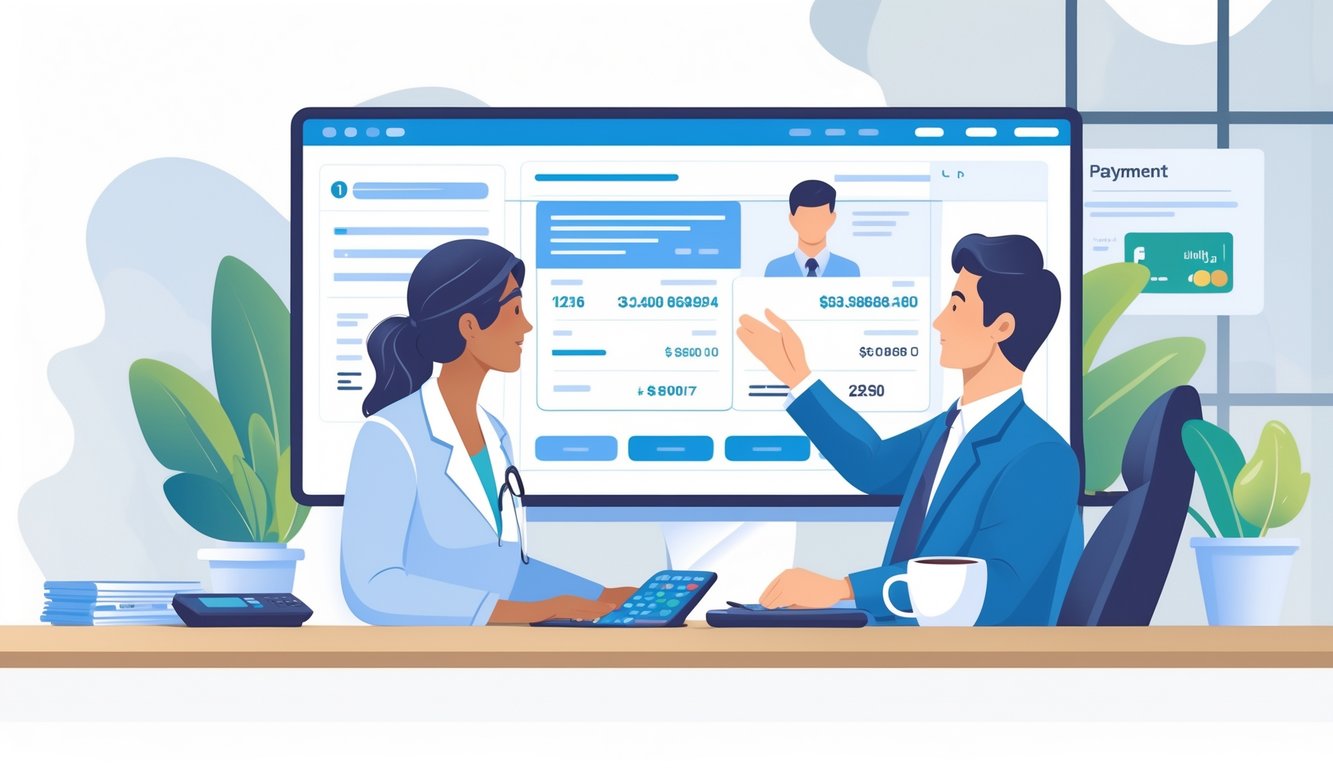Have you ever received a medical bill and wondered why you didn’t get the insurance payment you expected? If you see a CO100 denial code on your explanation of benefits (EOB), it means the insurance company sent the payment directly to the patient or responsible party instead of the healthcare provider. This typically happens when the provider is out-of-network or when the insurance company has policies that direct payments to subscribers rather than providers.

This situation can create confusion for both patients and healthcare providers. For patients, it means you’ve received money that may need to be forwarded to your doctor or hospital to settle your bill. For providers, it means they need to collect payment directly from you, rather than from the insurance company.
Understanding this denial code helps you navigate your financial responsibilities after receiving medical care. When you see CO100 on your statement, check if you’ve received a payment from your insurance company that matches the amount on your EOB. If you have, remember that this money is intended to cover the medical services you received, and your provider will likely be contacting you for payment.
Understanding CO100 Denial Code
Check the below flash code to understand easily. The CO100 denial code is a common insurance claim adjustment reason that providers encounter when payments have been sent directly to patients instead of the healthcare provider. This situation creates unique challenges for medical billing staff who must recover these funds.

Definition and Core Meaning
CO100 stands for “Payment made to patient/insured/responsible party.” This code appears on the Explanation of Benefits (EOB) or Electronic Remittance Advice (ERA) when an insurance company has processed a claim but directed the payment to the patient rather than the healthcare provider who rendered the service.
Unlike many denial codes that indicate problems with the claim itself, CO100 doesn’t suggest the claim was rejected. The claim was actually approved, but the funds were sent to the patient instead of directly to you, the provider.
The code is part of the standard Claim Adjustment Reason Codes (CARCs) used throughout the healthcare industry to communicate specific reasons for payment adjustments.
Common Scenarios Involving CO100
You might encounter CO100 in several common situations. Out-of-network services frequently trigger this code, as many insurance plans pay patients directly when they see providers outside their network.
Assignment of benefits issues are another common cause. If a patient doesn’t sign the assignment of benefits form or the insurer doesn’t have this information on file, they’ll send payments to the patient by default.
Some insurance plans, particularly indemnity plans, are structured to pay patients directly regardless of network status.
Certain government programs and workers’ compensation cases may also result in CO100 codes, depending on their specific policies and protocols for claim payments.
Distinction Between Patient and Provider Payments
When insurers issue payments to patients instead of providers, they shift the responsibility of provider compensation to the patient. This creates a three-way financial relationship that can be challenging to manage.
For you as a provider, a CO100 code means you need to collect payment directly from the patient who has received the insurance funds. The patient now holds both the legal and financial responsibility to pay for services rendered.
Unlike direct provider payments that are automatically applied to patient accounts, patient-directed payments require additional follow-up. You’ll need to:
- Contact patients to remind them of their responsibility
- Document all collection attempts
- Establish clear policies for handling these situations
Many practices require upfront payments or deposits from out-of-network patients to mitigate CO100-related collection issues.
Causes and Implications of CO100 Denial
The CO100 denial code indicates that payment for services was made directly to the patient or responsible party rather than to the healthcare provider. This scenario creates several challenges for medical practices and can impact their revenue cycle.
Typical Events Leading to Denial
When patients have out-of-network benefits, insurance companies often send payments directly to them rather than to providers. This commonly occurs with indemnity plans or when you haven’t established a direct payment agreement with the insurer.
Some insurance plans, particularly those for personal injury cases, contractually require payments to go to the policyholder. This is also common with automobile insurance medical payments and certain employer-sponsored plans.
If your practice failed to obtain a valid assignment of benefits (AOB) form from the patient, insurers may refuse to pay you directly. Always verify that your AOB forms are properly completed and up-to-date for each patient.
Sometimes patients specifically request that payments go to them, especially when they’re managing their own healthcare expenses or plan to seek reimbursement from another source.
Insurance Coverage and Eligibility Requirements
Insurance policies have specific eligibility requirements that affect how payments are distributed. Many plans will only pay providers directly if they’re in-network or have established payment arrangements.
You should verify a patient’s coverage details before providing services. Some plans have high deductibles that patients must meet before coverage begins, and payments related to these claims often go to patients first.
When dealing with secondary insurance, coordination of benefits can lead to CO100 denials if the primary insurer pays the patient directly. This creates a complex situation where you must seek payment from the patient rather than the secondary insurer.
Self-funded employer plans often have unique payment rules. These plans may send payments to employees rather than providers based on the employer’s liability arrangements and plan design.
Legal and Financial Impacts
When insurers pay patients directly, you face increased risk of not receiving payment for services rendered. Many patients don’t understand they should forward these payments to you or may use the funds for other purposes.
The CO100 denial impacts your cash flow and increases your accounts receivable days. Your billing staff must spend additional time and resources contacting patients to collect payment, which raises administrative costs.
In some states, legal protections exist for providers when insurers pay patients directly. You may have grounds for legal action if a patient receives and keeps insurance payments meant for your services.
Setting clear financial policies with patients can help mitigate these issues. Have patients sign agreements acknowledging their responsibility to forward insurance payments they receive for your services.
Best Practices for Addressing a CO100 Denial

When facing a CO 100 denial, you need a strategic approach to recover funds that were sent to patients instead of directly to your practice. The right actions can help you reclaim payments and prevent future issues.
Appeal Process and Documentation
Start by contacting the insurance company to verify the payment was indeed sent to the patient. Request a copy of the EOB (Explanation of Benefits) and the check or direct deposit information showing when and how much was paid.
Create a detailed appeal letter explaining that your office should have received payment directly. Include:
- Copy of the patient assignment of benefits form
- Proof that you’re in-network (if applicable)
- Copy of your initial claim
- Patient account information
Submit your appeal within the payer’s deadline, typically 30-180 days from the EOB date. Keep detailed records of all communication, including call reference numbers and representative names.
Follow up every 2 weeks until resolved. If the payer acknowledges their error, they may reissue payment directly to you.
Reimbursement and Settlement Strategies
Contact the patient promptly when you discover a CO100 denial. Many patients don’t realize they received insurance money meant for your services.
Send a friendly letter explaining the situation with:
- The exact amount owed
- A copy of the EOB showing the payment made to them
- Clear payment instructions
- A deadline for response
Consider offering a small discount (5-10%) for quick payment. This often costs less than prolonged collection efforts.
For reluctant patients, propose a reasonable payment plan. Document all settlement offers and patient responses carefully to protect against future disputes.
As a last resort, you may need to use formal debt collection procedures. Be aware of state laws regarding collections and statutory penalties for non-payment.
Avoiding Future Payment Discrepancies
Verify insurance information at every patient visit. Ensure you have current insurance cards and updated patient contact details.
Obtain signed assignment of benefits forms from all patients. These documents should:
- Clearly authorize direct payment to your practice
- Be updated annually
- Be kept in accessible patient files
Check your provider enrollment status with insurance companies regularly. Outdated information often triggers CO100 denials.
Consider implementing electronic claims and payment systems. Direct deposit and electronic remittance reduces payment routing errors.
Pre-verify benefits before providing expensive services. This helps identify potential payment issues before they occur.
Train your billing staff to recognize CO100 patterns with specific payers. Some insurers have unique requirements for directing payments to providers.
Legal Framework and Rights Related to CO100 Denial

When facing a CO100 denial code, you have specific legal rights and remedies. The legal system provides structured ways to challenge payment redirection and recover funds that should have been paid to healthcare providers.
Substantive Rights and Remedies
You have fundamental rights when dealing with CO100 denials. Insurance contracts create legally enforceable obligations between providers, patients, and insurers. As a healthcare provider, you have the right to pursue payment for services rendered according to your contracts with insurance companies.
Your remedies include:
- Direct recovery actions against patients who received payments meant for you
- Contract enforcement against insurers who improperly directed payments
- Small claims court for amounts typically under $10,000 (varies by state)
- Assignment of benefits enforcement if patients signed these agreements
State laws often provide specific protections for healthcare providers in payment disputes. Many states have prompt payment laws that impose penalties on insurers for improper payment handling or redirection.
Relevant Civil Procedure and Trial Practice
The legal process for addressing CO100 denials follows specific civil procedure rules. You must follow proper notice requirements before filing legal action. This typically includes sending demand letters to patients or insurers.
Timing is critical—statute of limitations for contract claims ranges from 3-10 years depending on your state. Evidence requirements include:
- Complete medical documentation
- Proof of services rendered
- Billing records
- Insurance verification
- Patient financial responsibility agreements
Discovery processes allow you to obtain evidence of payment from insurers to patients. Depositions may be necessary to establish when and how patients received payments meant for your practice.
Role of Judicial Means and Proceedings in Equity
Equitable remedies offer additional options when standard legal remedies aren’t sufficient. Courts may issue injunctions to prevent patients from spending insurance payments meant for providers. Equitable liens can be placed on funds improperly paid to patients.
You can seek judicial intervention through:
- Declaratory judgments to establish rightful payment ownership
- Constructive trusts where courts declare that patients hold funds in trust for providers
- Unjust enrichment claims when patients retain benefits (payments) that rightfully belong to you
Mediation and arbitration often provide faster resolution than traditional court proceedings. Many provider-insurer contracts contain dispute resolution provisions that may apply to CO100 denials. These proceedings typically cost less than full litigation while still protecting your rights to proper payment.
Associated Damages and Wider Impacts
When a CO100 denial code occurs, healthcare providers face financial challenges, while patients may experience various personal and financial difficulties. The impacts extend beyond immediate financial concerns to affect emotional well-being and daily functioning.
Pain and Suffering, Emotional Distress, and Other Compensations
When payment goes directly to you instead of your provider, you might face unexpected stress. Medical bills can pile up while you wait for insurance reimbursement, creating anxiety and emotional distress.
You may experience frustration when trying to coordinate payment transfers between yourself and healthcare providers. This process often requires multiple phone calls, paperwork, and follow-ups.
For patients with chronic conditions, this payment issue can disrupt treatment schedules. If you’re unable to pay upfront costs while waiting for insurance money, you might delay necessary care, potentially worsening your condition.
Some patients report feeling caught in the middle between providers and insurers. This position can amplify feelings of helplessness, especially during illness or recovery when your energy is better spent on healing.
Property and Employment Implications
CO100 situations can affect your financial stability in several ways. Large medical payments might temporarily reduce your available funds for mortgage, rent, or other essential expenses.
Your employment may be impacted if you need to take time off to resolve payment issues. This is particularly true for complex cases requiring multiple calls during business hours.
Property decisions might be delayed as you wait for financial clarity. For example, home repairs or vehicle maintenance might be postponed while medical payment issues are resolved.
If you’re self-employed, the time spent managing payment transfers represents lost productivity. Small business owners report spending 3-5 hours on average resolving each CO100 payment situation.
Your credit score could be affected if providers send bills to collections while you’re working through the reimbursement process. This potential damage can last years beyond the original payment issue.
Frequently Asked Questions
Understanding denial codes helps you navigate insurance claims more effectively. CO100 is a common code that affects both providers and patients, with specific implications for payment responsibility and follow-up actions.
What does it mean when an insurance claim is denied with the CO100 code?
When you see a CO100 code on an explanation of benefits (EOB), it means the insurance company has sent the payment directly to the patient rather than to the healthcare provider. This is not actually a denial – the claim was approved and paid.
The provider hasn’t received direct payment for their services. Instead, the patient has received the reimbursement and is responsible for paying the provider.
Can you explain the impact of a CO100 denial code on a patient’s billing statement?
On your billing statement, a CO100 code indicates you’ve received payment from your insurance company for the medical service. You’ll see the full charge amount still listed as your responsibility.
The provider will expect you to forward the insurance payment you received. If you don’t pay the provider, you may receive collection notices despite having received insurance money.
Your statement might show the service as “patient responsibility” until you provide payment to the medical facility.
What steps should be taken when a payment is made directly to a patient due to CO100 denial code?
Contact your provider immediately to arrange payment. If you received a check from your insurance, you should forward this amount to the healthcare provider who delivered the service.
Keep documentation of the payment you make to the provider. This includes receipt copies and check numbers.
If you’ve already spent the insurance payment, contact the provider to set up a payment plan to fulfill your obligation.
How does the CO100 denial code differ from other common denial codes like CO 242 or CO 256?
CO100 indicates payment was made to the patient, not that services were denied. Other codes like CO242 (services not provided by network/primary care providers) actually reject the claim.
CO256 typically means the service isn’t covered by the patient’s plan, requiring full patient payment. With CO100, insurance covered the service but sent reimbursement to the patient.
The key difference is that CO100 represents an approved claim with redirected payment, while many other codes represent true claim denials.
What can cause a CO100 denial code to be issued by an insurance company?
The provider might be out-of-network with your insurance plan. Many insurers automatically pay the policyholder directly for out-of-network services.
You may have submitted the claim yourself using a claim form rather than having the provider bill directly.
Some insurance plans, particularly indemnity plans, routinely pay patients directly regardless of network status. Assignment of benefits forms may not have been properly completed or processed.
In what circumstances is the patient typically responsible for payment after a CO100 denial code is applied?
You’re responsible for payment in all circumstances when CO100 is applied. Since you received the insurance payment, you must forward those funds to your provider.
If you visited an out-of-network provider, you might owe additional amounts beyond what insurance paid you, depending on the provider’s full charges.
Even if the payment you received seems less than expected, you’re still obligated to pay the provider with the funds you received from insurance.







